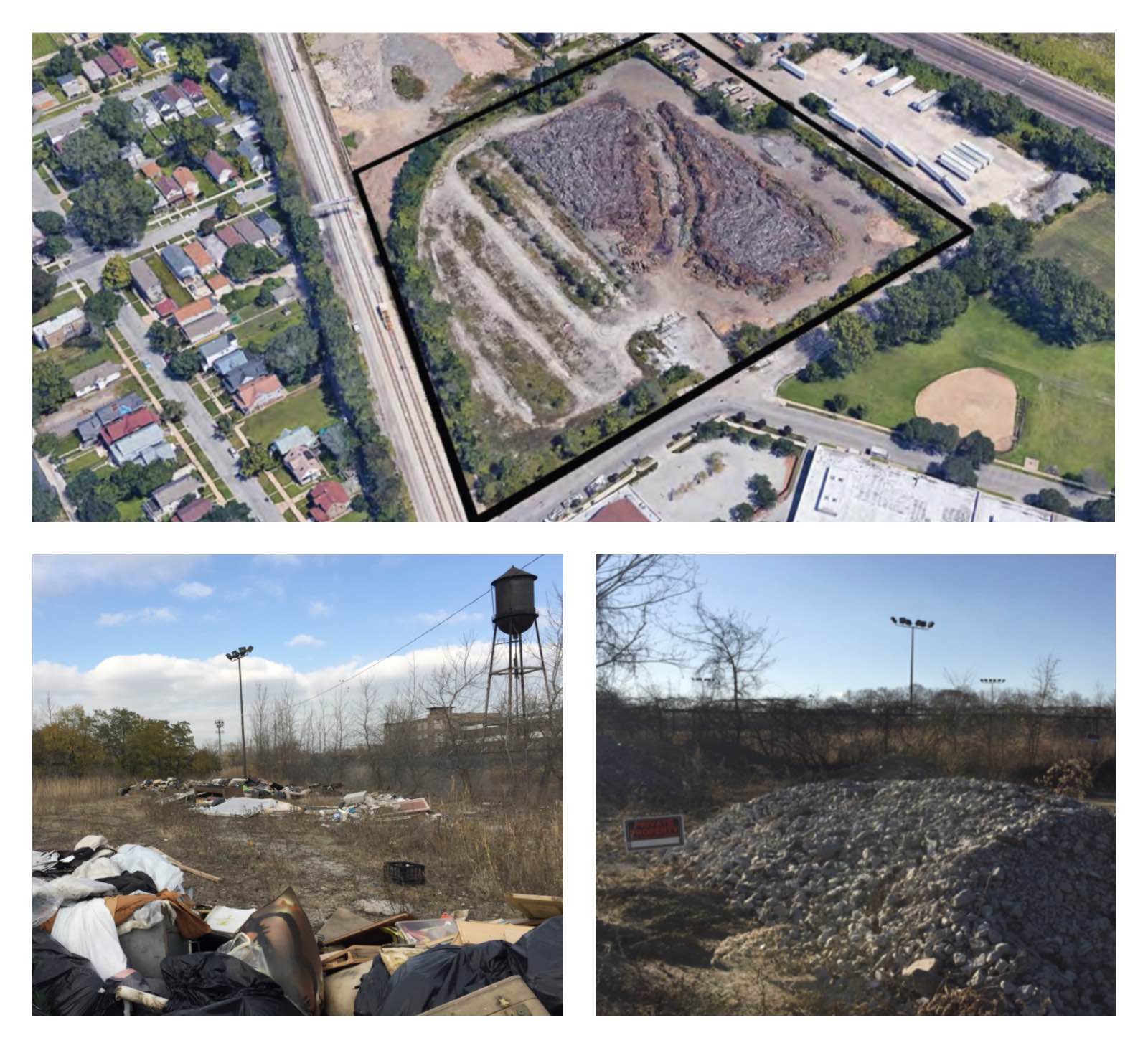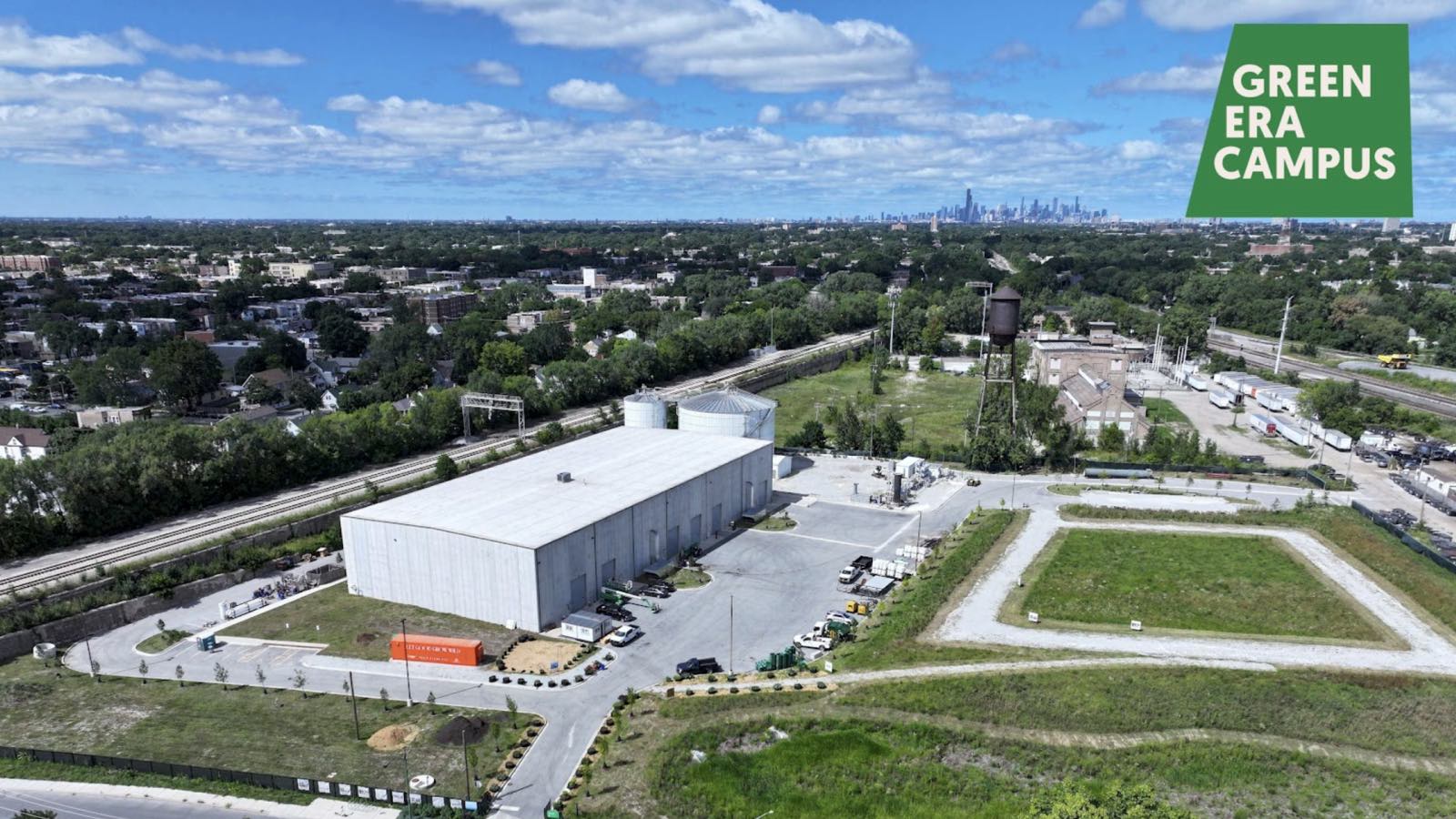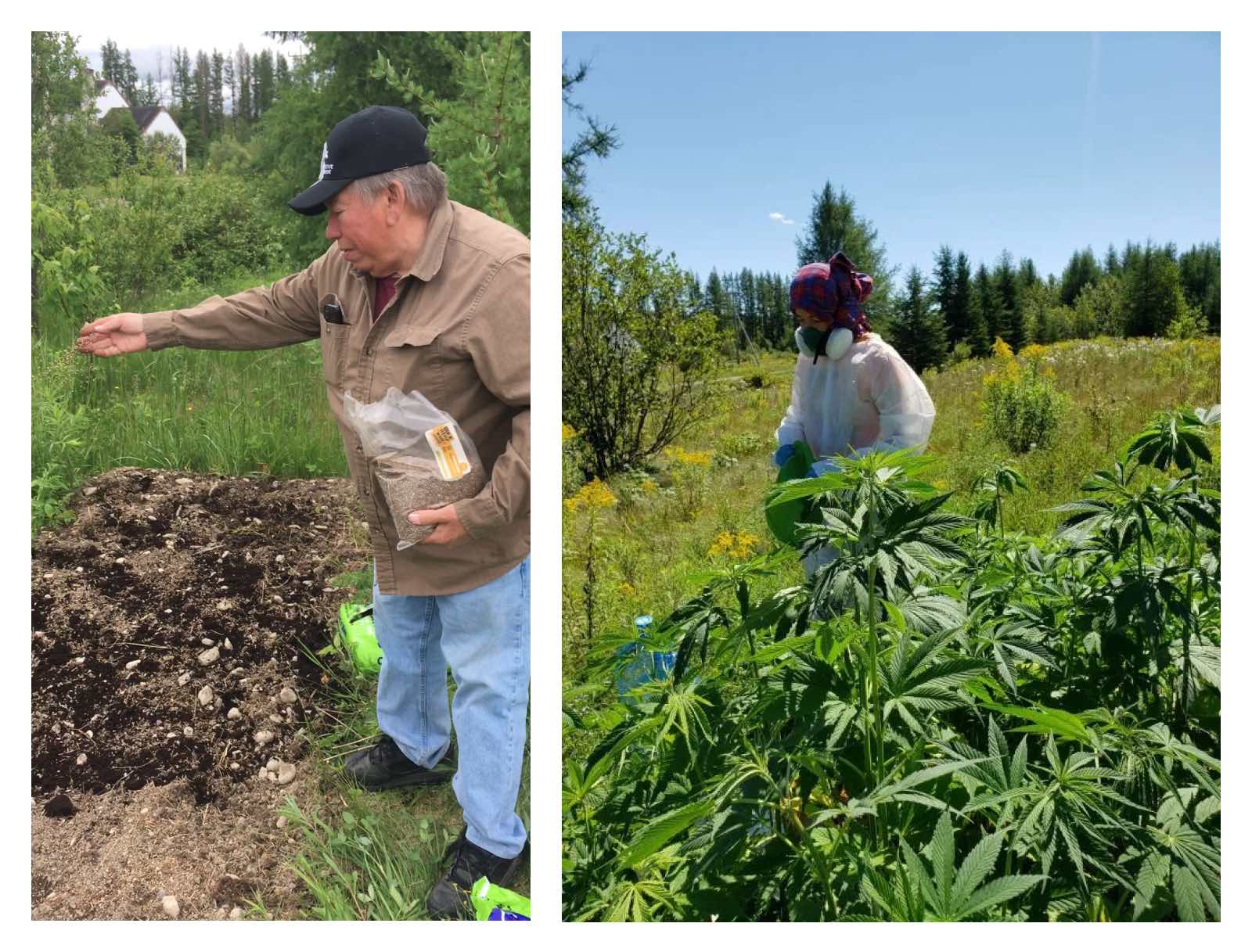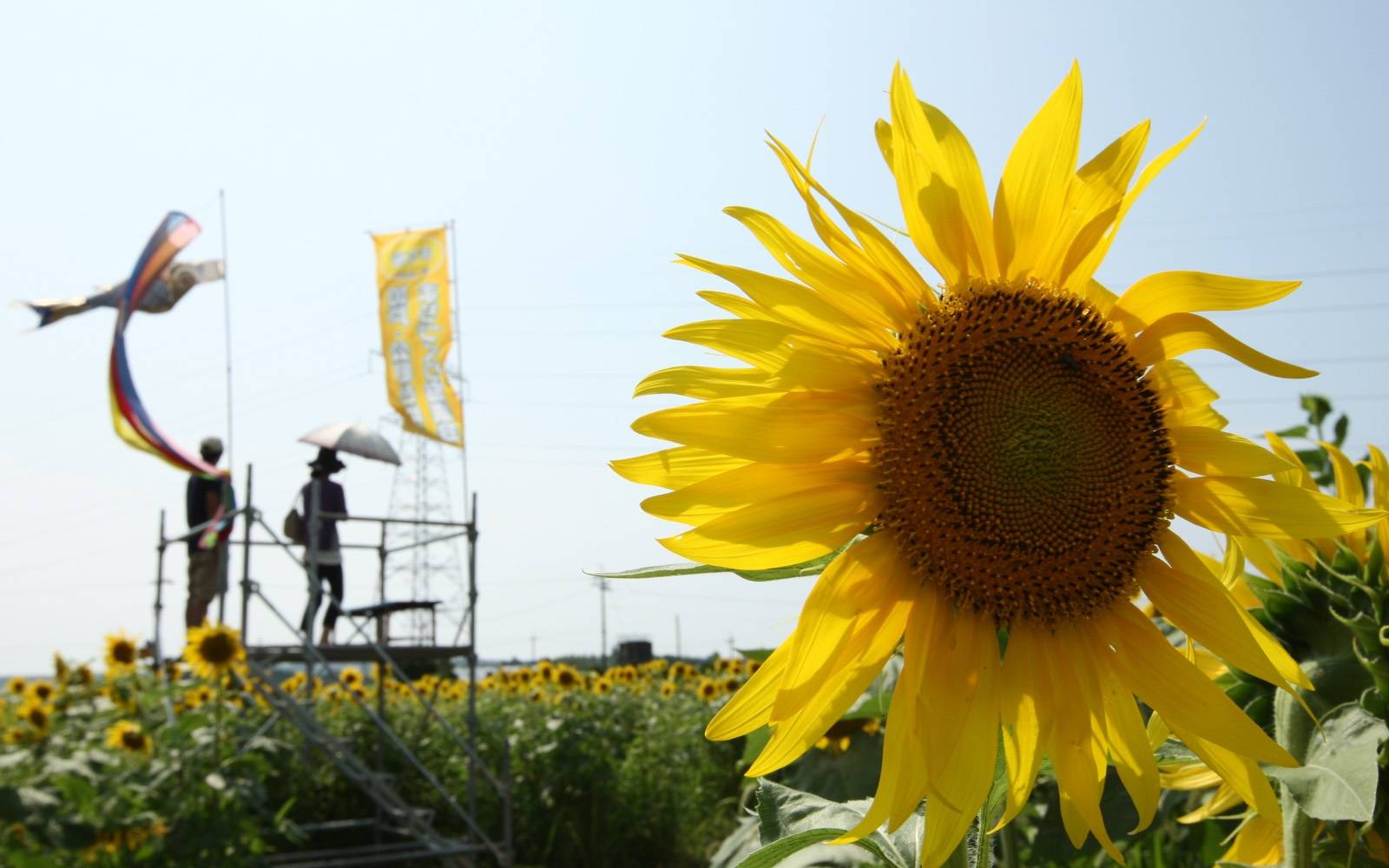
The vision
The tarp shade snaps and flutters in the breeze above the harvest volunteers. The CSA is bountiful this spring — crunchy lettuce, sweet strawberries, and even some cherries from the new windbreak. Stores around here sell produce this tasty, organic, and local for a fortune, but our volunteers feed families on it for just an hour of work a week and some dirty fingernails. The model is spreading. Vacant lots and brownfield sites all over the city have started sprouting biodigesters and sunflower fields, compost vessels and prairie plantings, communities of care: the phytoremediating foot soldiers of food sovereignty in recovery.
— a drabble by Looking Forward reader Betsy Ruckman
The spotlight
There are more than 450,000 brownfield sites across the U.S. — previously developed parcels of land that have been left abandoned, with some form of contamination. They may be former industrial facilities, gas stations, mines, landfills, dumping sites. And before they can be reused, they need to be cleaned, or remediated.
So, what does that mean exactly? It’s not as if a bunch of volunteers can go out with sponges and buckets of soapy water to rid the land of pollution. Brownfield remediation may involve a number of tactics — like digging up contaminated soil and carting it offsite for safe disposal or treatment; putting some sort of barrier between the contaminated ground and whatever’s going to be built on top of it; injecting chemicals or microbes into the soil that can break down harmful substances; or planting plants that can suck them up.
Using plants to treat pollution is known as phytoremediation, and it’s been used successfully to remediate heavy metals, petroleum, fertilizer runoff, and even radioactive elements in the wake of the Chernobyl disaster.
Any of these efforts can be costly and time-consuming, which is why brownfields often sit idle for years or even decades (although President Biden’s bipartisan infrastructure law mobilized billions of dollars to address a backlog of Superfund sites, brownfields, and abandoned oil and gas wells). Still, despite high barriers, some communities have taken their own initiative to remediate brownfields and return the land to use. Looking Forward reader Betsy Ruckman, who submitted the drabble above, described “phytoremediating foot soldiers” — envisioning a world in which small-scale, community-led remediation efforts give rise to a patchwork of healthy and communal green spaces.
“I was inspired by the Chicago-area Green Era Campus,” Betsy said, which is “turning brownfields into productive organics-recycling hubs, teaching gardens, and productive fields.”
The Green Era Campus is just one example of how community leaders are taking remediation efforts into their own hands, investing in returning land to beneficial uses and testing strategies for dealing with some of the toughest soil contaminants.
Revitalizing an abandoned lot on Chicago’s South Side
Erika Allen has been working in urban agriculture for over two decades. “I was at that time, and still, really focused on juvenile justice diversion,” she said. She began with art therapy as an intervention that could keep young people from going down a path toward incarceration, but quickly realized that the food system offered a more promising opportunity — “because it’s also economic,” she said. “We can all grow food and consume it and sell it and create other products.”
In 2002, she founded the Chicago chapter of Growing Power, which has since reorganized as Urban Growers Collective — an organization focused on food security, job training, and community engagement through farming. While working on other growing projects, Allen and other partners began to develop a vision for a multidimensional site that could be a hub for energy development, composting, education, community events, and of course, growing food: the Green Era Campus.
In 2015, the team acquired a 9-acre piece of abandoned land in the neighborhood of Auburn Gresham that had formerly been used as an impound lot. They bought it from the city for just $ 1.
“Everybody on the South Side knows the space because if you had your car towed, it was usually towed to this place,” Allen said. Prior to that, it was owned by a manufacturer of agricultural equipment.

The site of the Green Era Campus, before remediation efforts began. Courtesy of Green Era Chicago
The site had a mixture of contaminants, including petroleum and motor oil from the cars that had been held there and debris from illegal dumping. The crew also discovered a submerged tank that was still filled with linseed oil, dating back to the manufacturing days. “That was a surprise,” Allen said.
The remediation process took years. After being denied once, the team was awarded an EPA grant for brownfield remediation in 2017. They contracted the environmental firm Terracon to lead the remediation efforts, which included a variety of strategies.
Some of the remediation tactics were tailored to the variety of intended uses for the site. “We built on top of some of the contamination, so a lot of it was treated on-site,” Allen said. For instance, one of the key elements of the campus is a commercial-scale anaerobic digester to process food waste from local restaurants, manufacturers, and residents (which may have inspired the “biodigesters” referenced in Betsy’s drabble). That facility is built on top of concrete, which acts as a barrier. In other places, the team excavated contaminated soil and brought in clean soil to replace it.
The price tag was ultimately in the millions. “It was absolutely astronomical,” said Jason Feldman, co-founder of Green Era Sustainability, an investment entity that is one of several partner organizations working on the project. “The cost of the cleanup was more than the value of the land, even if it was clean.”
But, Feldman and Allen stressed, they see that investment in the land as a key value that the project is bringing to the community, flipping a narrative of chronic disinvestment. “We were able to figure it out and innovate and educate the community, but also take away the extreme expense of what the community is required to do to be able to address environmental racism that created those issues in the first place,” Allen said.

The new-and-improved Green Era Campus. Courtesy of Green Era Chicago
Although phytoremediation was the focus of Betsy’s vision, it wouldn’t have been appropriate for the Green Era site — plant roots, while amazing, can’t clear away debris or a submerged tank. But Feldman says he’s interested in that approach for future projects and partnerships. The Green Era team also hopes that the compost produced at their facility might be able to help out other remediation projects in the future. “One of the biggest costs of the whole remediation process at the Green Era Campus was actually bringing in the clean soil,” Feldman said. “Which is a resource that’s being taken from one place and brought to another place. We could use this beautiful, nutrient-rich material that we’ve got to help remediate other sites.” He’d also like to see the compost be used to support urban reforestation efforts, which he views as a form of phytoremediation of city soil, even in places that aren’t designated as brownfields.
As far as the campus goes, phase one is now officially complete. The site is clean and the digester is built and operating, creating compost and capturing gas that is already being sent to the grid as energy. “I’m in the process of raising the funds to build the rest of the campus,” Allen said, which will include a vertical farm, a community education center, a plant nursery and produce store, and a stormwater mitigation area.
Cleaning up PFAS in the northeast corner of Maine
Halfway across the country, another group of community partners is testing the limits of phytoremediation on one of the most pernicious substances in the environment.
In 2009, the Mi’kmaq Nation in Maine acquired around 800 acres of land that had been part of the Loring Air Force Base. Due to contamination from fuel, pesticides, on-site landfills, and other hazards, the base was declared a Superfund site in 1990 (four years before it officially closed, and one year before the Mi’Kmaq tribe received federal recognition). Superfund sites differ from brownfields in their level of contamination, and because of the hazard they pose to human health, the federal government is obligated to clean them. Loring Air Force Base remains on the EPA’s National Priorities List, but some efforts to date have included capping the former landfills and removing low-level radioactive waste from nuclear weapons operations.
But the tribe discovered there was another contaminant on their new land: per- and polyfluoroalkyl substances, or PFAS. Sometimes known as “forever chemicals,” PFAS are a class of toxic chemicals that have been used in a huge variety of industrial and household items since the 1940s, though in recent years, governments have taken steps to regulate them due to mounting evidence linking the chemicals to health issues. PFAS are often found on military bases, in the residue of firefighting foams.
Meanwhile, Chelli Stanley, the founder of a small environmental remediation organization called Upland Grassroots, was studying ways that hemp might be used to clean toxic substances from polluted ground. “It’s a bioaccumulator, it’s very versatile in phytoremediation, in that it can take up a lot of different chemicals,” Stanley said of the plant. “Once it became legalized, I just started reaching out to people to see if we could start testing its abilities on different chemicals.”
Stanley reached out to Richard Silliboy, vice-chief of the Mi’Kmaq Nation. “He was very interested in finding solutions to cleaning land — that we could do it ourselves, and we didn’t have to wait on anybody,” Stanley said. “And we could further the science so that it could help to further the ability to clean the land in the future.” In 2019, the tribe began a research project to find out if hemp could help rid the land of PFAS contamination, working with Stanley and Upland Grassroots as well as researchers at the Connecticut Agricultural Experiment Station, and now also at the University of Virginia.

Left: Richard Silliboy plants hemp seeds on the land the Mi’Kmaq tribe owns at the site of the former Loring Air Force Base. Right: Chelli Stanley tends the experimental hemp plot. Courtesy of Upland Grassroots
Five years in, their experiments have shown that hemp does remove PFAS from the soil. But Sara Nason, one of the lead researchers from the Connecticut Agricultural Experiment Station, said that it stops short of being a total solution. “For most organic chemicals, an important aspect of phytoremediation is that plants and the soil bacteria around them help to break down the contaminants and detoxify them,” Nason said. But PFAS are synthetic chemicals, and as their nickname, ‘forever,’ would suggest, they can’t easily be broken down. “Even if the plants remove PFAS from the soil, we still need other methods to destroy the PFAS in the plants.”
That has been one of the greatest challenges to date, Stanley said. “There’s no way to destroy the PFAS at this point, and we don’t want to put it in a landfill or just have a bunch of hemp sitting around that’s full of PFAS.” Currently, all of the hemp from the site is going to labs where scientists are working on a variety of techniques that might help to break the chemicals down. This fall, the group received a four-year grant from the EPA to continue the research.
All of the partners involved are taking a long view of this work, with the goals of continuing to clean the land as much as possible, contributing to the scientific understanding of PFAS, and, for the tribe, being able to someday harvest plants from the land without fear of what may lurk inside them.
“Our actual phytoremediation results have not been as impressive as we would like them to be,” Nason said, “but in some ways, that has not mattered as much as I would have thought. There are very few ways for communities to take action on PFAS-contaminated soil right now, and doing something that helps in a small way has been very motivating for the people participating.”
Although questions remain about how to fully remediate the persistent chemicals, Stanley noted that working with hemp or other bioaccumulating plants is a low-cost, low-tech option available to any land steward dealing with different forms of contamination in soil and water.
“Phytoremediation is very accessible. You don’t need a degree, you don’t need specialized training,” Stanley said. “As long as you know how to grow plants, then you would be able to do it” — much like the grassroots vision Betsy shared in her drabble.
— Claire Elise Thompson
More exposure
- Read: more about the story of Green Era Campus and the progress of its various projects (Block Club Chicago)
- Read: more about the PFAS remediation work on the former Loring Air Force Base in Maine (Grist)
- Read: about how the bipartisan infrastructure law has quadrupled spending on brownfield remediation — and what could happen to future funding under the new administration (The Guardian)
- Read: a Q&A with a toxicologist who has been cleaning up contaminated sites with fungi — “mycoremediation” (Yale Environment 360)
- Browse: a citizen’s guide to phytoremediation, from the EPA
A parting shot
After their successful use at Chernobyl, sunflowers were planted in Japan in the wake of the Fukushima nuclear accident in 2011. In this case, the efforts were not as effective, likely due to the variety of sunflowers planted. But as Reuters reported at the time, the cheerful yellow flowers stood for more than literal phytoremediation, bringing a sense of hope and agency to residents in impacted areas. This photo from 2011 shows a sunflower farm in full bloom in Fukui, Japan, about 300 miles from the disaster.

This story was originally published by Grist with the headline How communities are giving new life to polluted land on Nov 20, 2024.